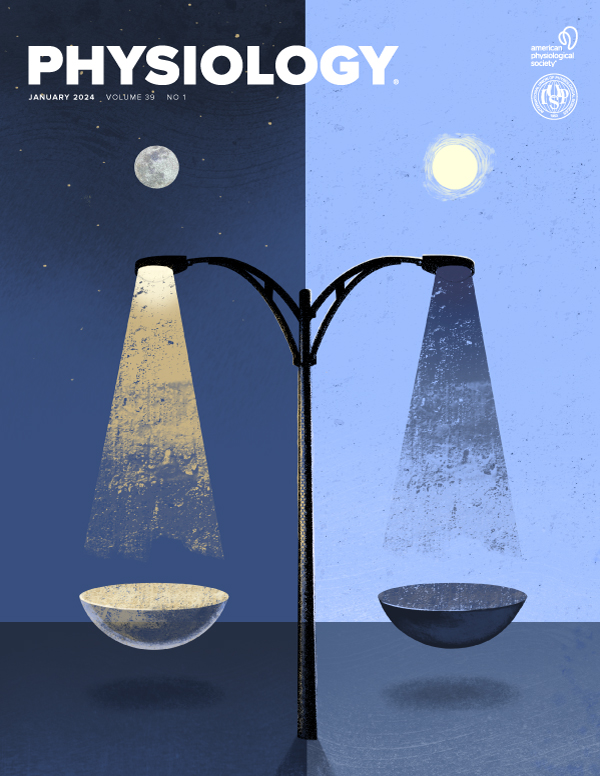Teaching K-12 Students Using Jenga! The Impact of Health Behaviors on Community Health, Wellbeing, and Resilience
IF 5.3
2区 医学
Q1 PHYSIOLOGY
引用次数: 0
Abstract
As society continues to move forward from the COVID-19 pandemic, outreach with K-12 schools is critical for: 1) reestablishing connections with students and teachers and 2) generating interest in health-focused science, technology, engineering, and math (H-STEM) careers. The Department of Kinesiology and Integrative Physiology at Michigan Technological University leveraged the Michigan-Indiana Physiology Understanding Week and National Rural Health Day events to organize a health science-based outreach visit with local schools. Graduate students met with middle and high school students and presented a hands-on activity using the game Jenga to demonstrate the links between health behaviors, disease, and community health. For the activity, students worked together in small teams (e.g., 4-8 students) and were given two Jenga towers (Tower A and Tower B), each representing a community of individuals. The goal of the activity was to keep both towers standing strong. Teams were presented with 12 strips of paper labeled with either a ‘health behavior’ (e.g., physical activity, diet, body weight, smoking) or a ‘disease’ (e.g., heart disease, diabetes, influenza, COVID-19) and accompanying instructions on whether to add or remove blocks from each tower. When presented with a health behavior, students added blocks to Tower A for positive health behaviors (e.g., not smoking) and removed blocks from Tower B for negative health behaviors (e.g., smoking). When a disease was presented, students removed blocks from both towers, but fewer blocks were removed from Tower A compared to Tower B, demonstrating relatively lower diseases rates or severity in that community. As the activity progressed, Tower A retained more blocks than Tower B. For the grand finale, students observed that with the greater strength and stability of Tower A it was better equipped to withstand a natural disaster such as an earthquake that was simulated by students shaking the table that held both towers. At the end of the activity students were able to describe the connections between positive health behaviors and lower rates of disease, and how taken together, these impact overall community health, wellbeing, and resilience. This activity was delivered to 15 different science classes and 225 students ranging from 6-12th grade. The activity was well received by students and teachers and aligned with educational standards that focus on three-dimensional learning. The inclusion of graduate students as guest instructors improved their understanding of public health promotion and provided them with practice communicating health science to a lay audience. Importantly, connecting with K-12 schools to increase interest in H-STEM is an important step for helping to address the current healthcare workforce shortage. This is the full abstract presented at the American Physiology Summit 2023 meeting and is only available in HTML format. There are no additional versions or additional content available for this abstract. Physiology was not involved in the peer review process.用层层叠乐教K-12学生!健康行为对社区健康、福祉和恢复力的影响
随着社会继续从COVID-19大流行中走出来,与K-12学校的外展对于以下方面至关重要:1)重建与学生和教师的联系;2)培养对以健康为重点的科学、技术、工程和数学(H-STEM)职业的兴趣。密歇根理工大学运动学和综合生理学系利用密歇根-印第安纳生理学了解周和全国农村健康日活动,组织了一次以健康科学为基础的对当地学校的外展访问。研究生们与初中生和高中生见面,用叠叠游戏展示了一项实践活动,以证明健康行为、疾病和社区健康之间的联系。在活动中,学生们以小组形式(如4-8人)一起工作,并获得两个叠叠塔(塔A和塔B),每个塔代表一个社区的个人。这样做的目的是为了保持两座塔的坚固。团队收到了12张纸,上面标有“健康行为”(例如,体育活动、饮食、体重、吸烟)或“疾病”(例如,心脏病、糖尿病、流感、COVID-19),并附有说明,说明是否从每个塔上增加或减少积木。当呈现健康行为时,学生们在a塔中添加积极健康行为(如不吸烟)的积木,并从B塔中移除消极健康行为(如吸烟)的积木。当一种疾病出现时,学生们从两座塔上移走积木,但从a塔移走的积木比从B塔移走的积木少,这表明该社区的疾病发病率或严重程度相对较低。随着活动的进行,A塔比b塔保留了更多的积木。在压轴部分,学生们观察到,A塔的强度和稳定性更强,可以更好地抵御自然灾害,比如地震,学生们通过摇晃放置两座塔楼的桌子来模拟地震。在活动结束时,学生们能够描述积极的健康行为和较低的疾病发病率之间的联系,以及这些联系如何综合起来影响整个社区的健康、福祉和恢复力。本次活动共有15个不同的科学班,225名6-12年级的学生参加。该活动受到学生和老师的好评,符合注重立体学习的教育标准。研究生作为客座讲师的加入提高了他们对公共卫生促进的理解,并为他们提供了向非专业观众传播健康科学的实践。重要的是,与K-12学校建立联系以提高对H-STEM的兴趣是帮助解决当前医疗保健劳动力短缺问题的重要一步。这是在2023年美国生理学峰会上发表的完整摘要,仅以HTML格式提供。此摘要没有附加版本或附加内容。生理学没有参与同行评议过程。
本文章由计算机程序翻译,如有差异,请以英文原文为准。
求助全文
约1分钟内获得全文
求助全文
来源期刊

Physiology
医学-生理学
CiteScore
14.50
自引率
0.00%
发文量
37
期刊介绍:
Physiology journal features meticulously crafted review articles penned by esteemed leaders in their respective fields. These articles undergo rigorous peer review and showcase the forefront of cutting-edge advances across various domains of physiology. Our Editorial Board, comprised of distinguished leaders in the broad spectrum of physiology, convenes annually to deliberate and recommend pioneering topics for review articles, as well as select the most suitable scientists to author these articles. Join us in exploring the forefront of physiological research and innovation.
 求助内容:
求助内容: 应助结果提醒方式:
应助结果提醒方式:


